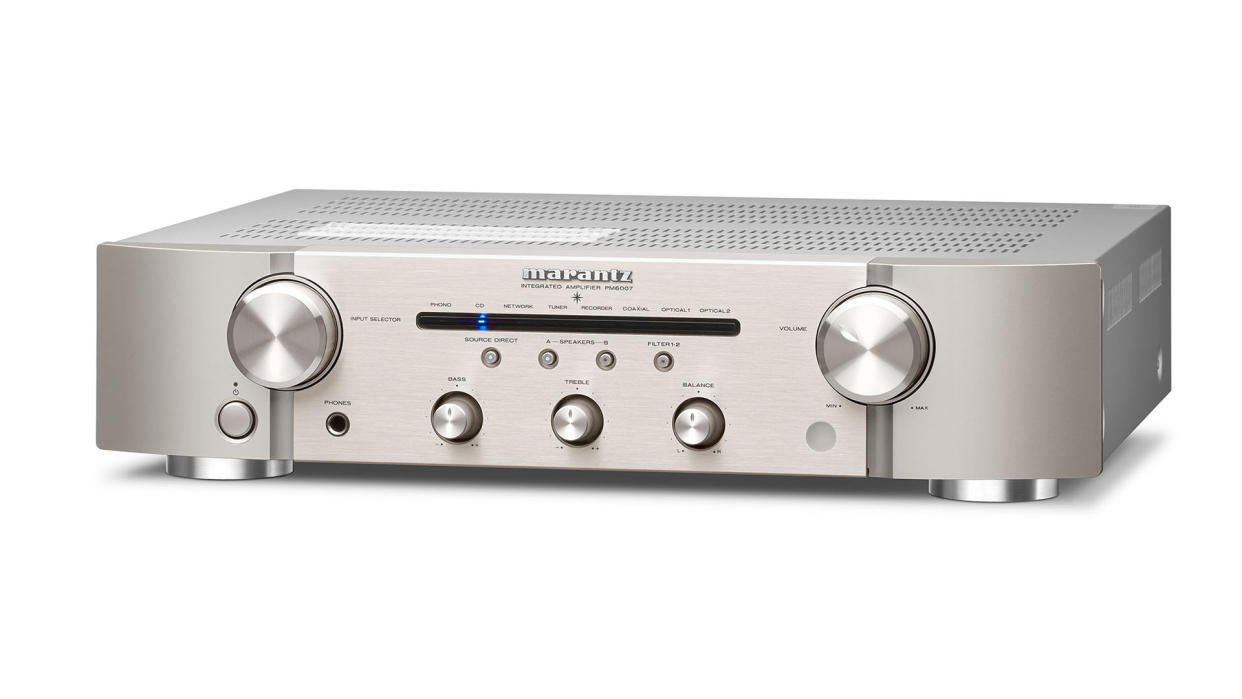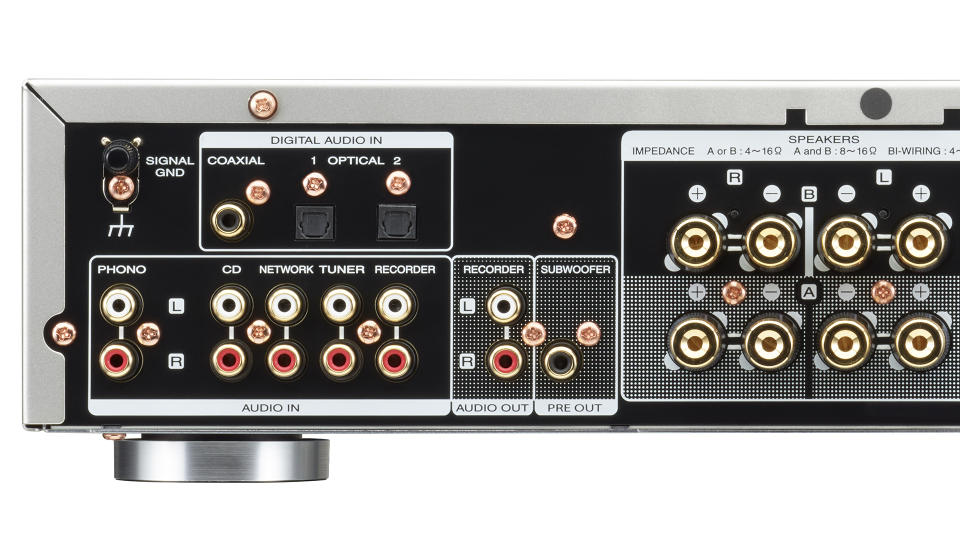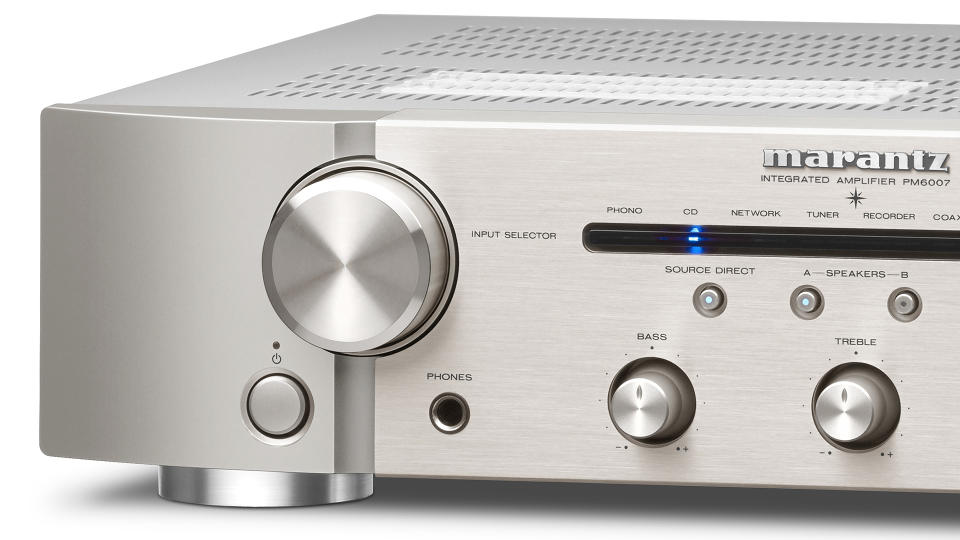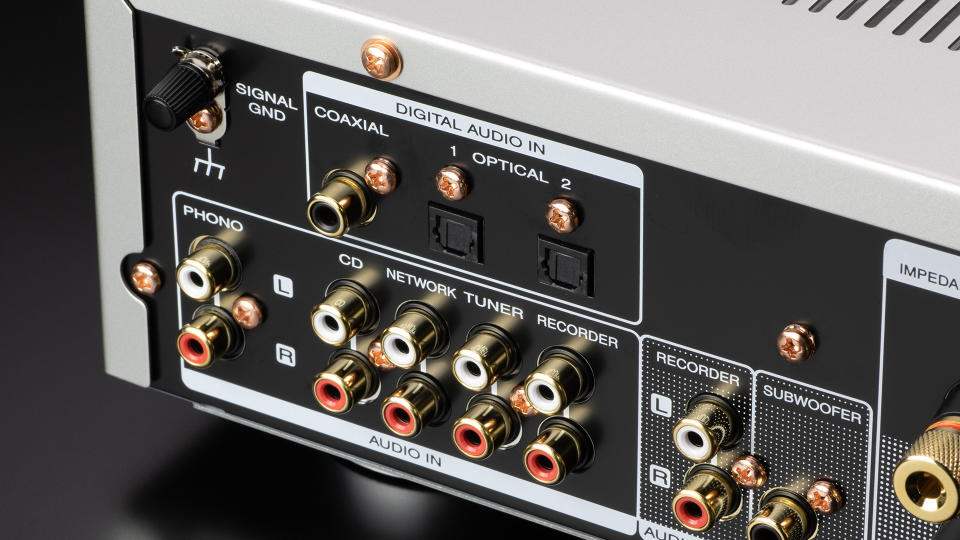Marantz PM6007

The path to self-improvement is never-ending: no matter how successful or saintly we are, there is always a way to better ourselves. The same also applies to hi-fi – regardless of how good a piece of kit is and how many accolades it has won, there’s always room for improvement.
Marantz is many steps along the journey towards making the best budget stereo amplifier possible, most recently with this new PM6007, which sets out to improve upon the 2018-launched Marantz PM6006 UK Edition. That predecessor was once the What Hi-Fi? Award winner in the same price bracket, and the new PM6007 has, inevitably, taken over that mantle. And wins once again in 2023.
Features

In our review of the PM6006 UK Edition, we said our only wish was that its vast connectivity included Bluetooth and a USB input, but that’s not where Marantz has sought to improve its 6000 Series line. Instead, the enhancements are centred around the performance – and who can argue with that?
Marantz PM6007 tech specs

Power 45W per channel
Inputs RCA x4, MM phono input, coaxial, optical
Headphone jack 6.3mm
Available finishes Black, silver-gold
Dimensions (hwd) 10.5 x 44 x 37cm
Marantz has implemented a new DAC into the PM6007, with the AKM AK4490 replacing the Cirrus Logic CS4398 found in its predecessor. It is complemented by two digital filters – a slow roll-off and sharp roll-off – that users can choose between when playing from a source connected to either of its two optical or single coaxial inputs. Such versatility has trickled down from the brand’s more premium digital processors, such as those built into the SA-10, SA-12SE and SA-KI Ruby.
In an effort to improve performance across the analogue inputs (of which there are four line-level, plus a MM phono), new components in the power amp and phono stages have been swapped in. The latter has also benefitted from upgraded circuitry – similar to that found in the PM7000N’s phono stage – to achieve a higher signal-to-noise ratio.
And while the entry-level amplifier still doesn’t have a USB input or Bluetooth, Marantz has added a subwoofer output to accommodate those who want to add extra thwack to their stereo set-up.
Build

Styling-wise, the PM6007 is more or less a carbon copy of its predecessor – and indeed the model that came before that. In fact, Marantz hasn’t revamped the aesthetic much at all in the line’s 13-year history. Placed side-by-side, only the odd finish and button differential would distinguish the new PM6007 from the PM6002 released in 2007, apart from the model number printed on the facade. That familiarity is disappointing.
Moving away from appearances, this is a well-constructed, well-finished chassis that, while perhaps too densely populated with dials for some minimalist tastes, offers traditional hi-fi appeal.
Sound

The clearest evidence of the line’s evolution lies in the PM6007’s performance. Its sonic character is as familiar as its casework: smooth, full-bodied and balanced, with a pleasing spaciousness. Like its predecessor, it’s about as agreeable a performer as you could ask for at this price.
Where it pulls away from the PM6006 UK Edition is in its greater clarity, precision and rhythmic punch. Marantz has traded some of that smoothness for a bit more oomph, as well as tightened up the bass, and the result is a more spirited presentation.
The dramatic opener of Portishead’s live performance of All Mine comes through with more presence, while the PM6007’s clearer disposition also makes more of the special occasion provided by the accompanying 35-piece orchestra. Move onto Högni’s rhythm-driven Moon Pitcher and the layers of ambient strands are more cohesively entwined, the new Marantz’s musicality rigorously precise.
Textures take on new levels of tangibility, too. The melodic finger-picking underpinning Matt Berninger’s acoustic-led Last Song is subtler, both in terms of the way the notes are formed and how they flow dynamically.
His characteristically brooding, contemplative vocal rises confidently above the aqueous acoustics, but the PM6007’s vocal delivery doesn’t feel as rock-solid and grounded as its predecessor’s. It’s not the end of the world, but in this regard the PM6007 has taken a small step backwards.
Marantz has done well to maintain consistency across the connections on offer, with the DAC, headphone output and phono stage all proving strong. Over coaxial, a little clarity and precision is sacrificed, but the fullness and dynamism remain intact. We prefer the slow roll-off filter (indicated by a blue LED) for its slight edge in exactness and naturalness over the warmer, more rounded sharp roll-off, signified by a purple LED.
That performance reveals itself through the phono stage and 6.3mm front-panel headphone output, too – it’s cohesive and punchy, but falls a little short of the clarity and sparkle offered through the line-level.
Verdict
The Marantz 6000 Series has allowed the company to have a firm grip on the budget hi-fi market over the past few years, and with the arrival of the PM6007, the amplifier line has been strengthened yet again – picking up multiple Award wins in recent years.
We wish Marantz’s engineers the best of luck in squeezing out even more performance next time round.
SCORES
Sound 5
Features 5
Build 5
MORE:
See all the What Hi-Fi? Awards 2023 winners

